So, you want to buy a new sink for your kitchen? Great choice! But what size should be right for the space? How much do they typically cost in regards to installation or removal from an old fixture that may no longer fit? We’ve got all this information here so let’s get started:
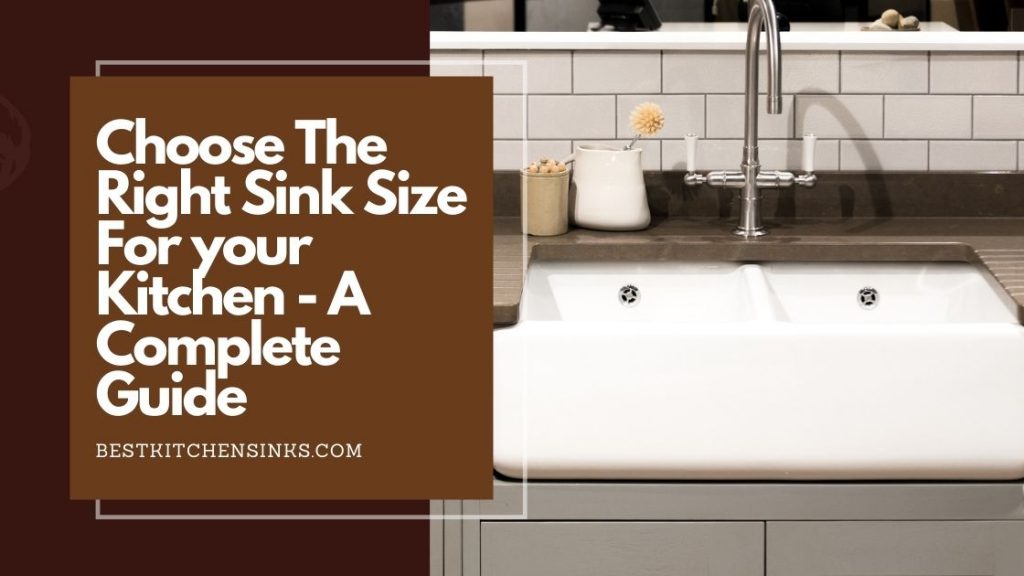
The perfect size for your kitchen is a sink that’s just large enough to hold all of its dirty dishes. With these helpful guidelines, you’ll be able to choose wisely and make sure it matches your kitchen space in the house while still being aesthetically pleasing!
Choosing the right sink size for your kitchen can be a challenge. There are so many factors to consider, but if you follow these five tips, it will be easier than you think.
Recommended:Kitchen Makeover On A Budget – Step by Step Kitchen Transformation
Basic Tips To Find the Perfect Size
The first tip is to measure the space in which you plan on placing your sink and make sure that there is enough room for it before making any purchase decisions. The second tip is to calculate how much water typically goes down the drain in an average day of usage. It’s important because some sinks have too small of a capacity or they are inefficient when it comes to drainage. Thirdly, make sure that the sink has sound construction by looking at reviews from previous customers who had purchased similar products in the past.
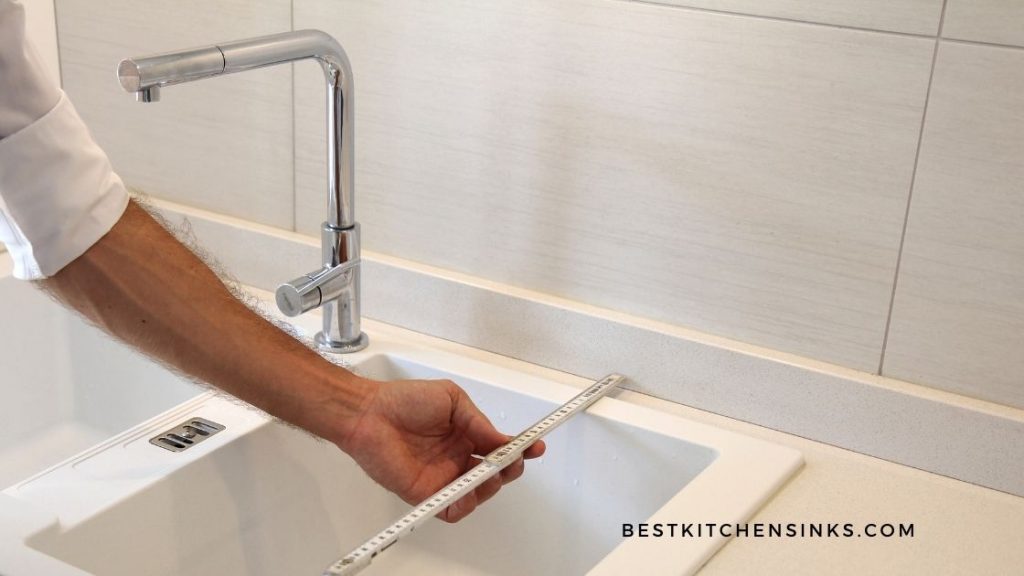
Finally, think about what type of sink is best suited for your needs and preferences. Do you want a traditional stainless steel sink or do you prefer the look of hammered copper or concrete? Remember that there are many types of kitchen sinks to choose from, but only one will be perfect for your personal style.
Size Options for a Kitchen Sink
When it comes to sink sizes, there is a wide range of kitchen sinks available with different dimensions. A kitchen sink can be as small as 9 inches in length or as big as 40 inches long.
If you need to replace an existing kitchen sink or buying a new one, first know what are the tasks that you are going to manage in the sink. If you are buying a prep sink, you might go for a smaller size, as it will just help you with food preparation. However, if you have to use your sink to perform cooking, washing, and meal prep, you should choose a size bigger and spacious to meet all your needs satisfactorily.

The most common kitchen sinks sizes are 30 to 33’’. Moreover, a standard kitchen sink can measure from 24 inches to 36 inches in length. Generally, 30’’ sinks are available as single bowl sinks. While you may get a double bowl sink if you are finding sink sizes above 30’’.
Read:Best Workstation Sink of 2021 – Complete Product’s Reviews & Buying Guide
Single bowl sinks
These sinks are great for washing large pots and pans. You get an uninterrupted space for washing your dishes. These sinks can measure anywhere from 24 to 33 inches.
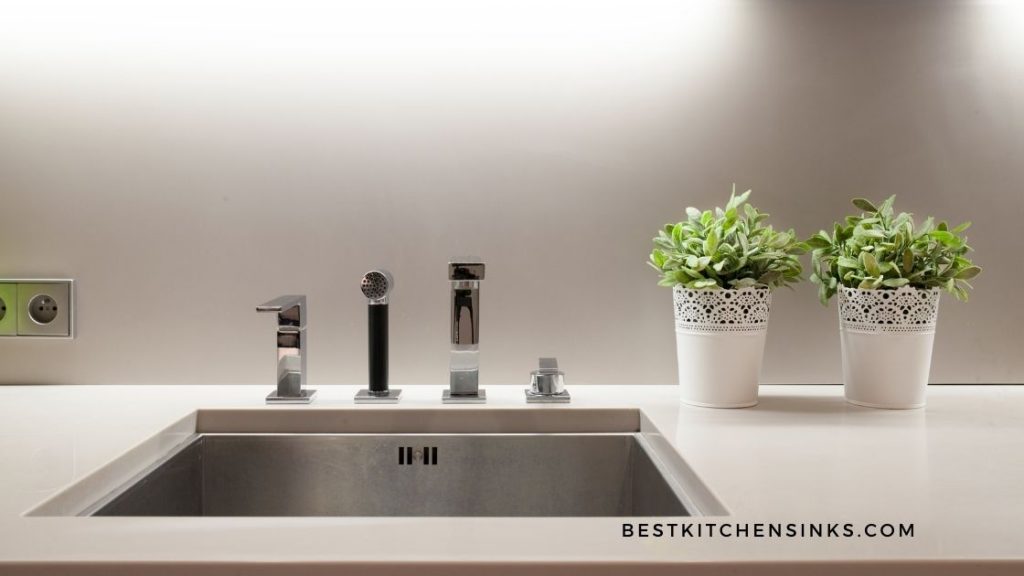
Double bowl sinks
If you prefer a double bowl sink, you might have some trouble getting one under a size range of 30 inches.
Double bowl sinks are mostly longer than 30 inches. These sinks enable you to keep your food prep area separate from the dirty bowl. Moreover, these sinks also help to soak and rinse dishes at the same time.
Oversized Sinks/ Triple bowl sinks
For larger kitchens, oversized kitchen sinks are available that satisfy the needs of large families and business owners. These sinks are generally used in professional kitchens or industries. The size of these sinks is greater than 36 inches. (up to 48 inches)
Apart from the length of the sink, you should also consider the depth of the sink. Wider sinks provide more room while deeper sinks make hand dishwashing easy.
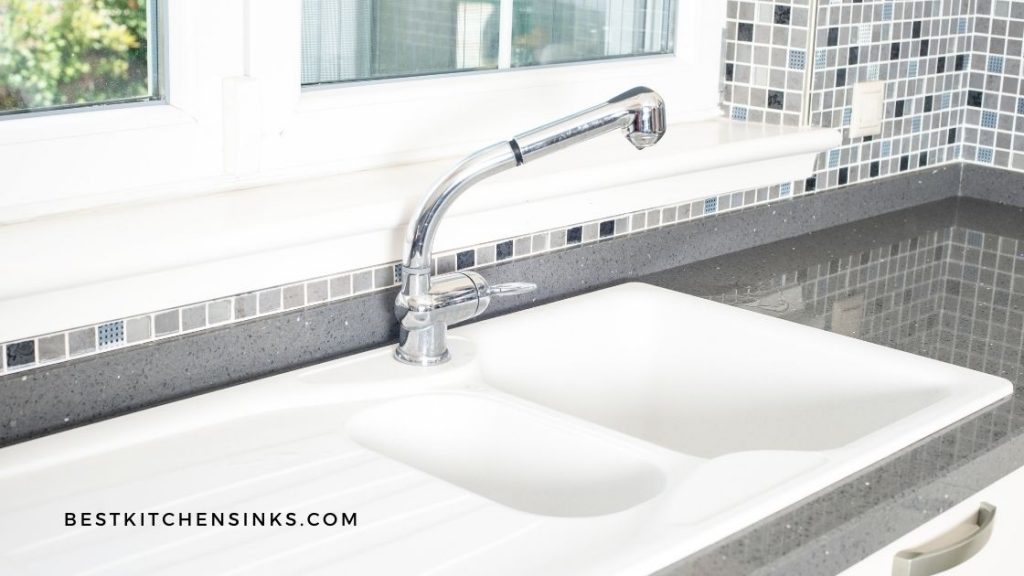
What Should be the Depth of My Kitchen Sink?
If you’ve been looking for a way to take your kitchen sink from drab and boring, then this is it! Instead of just eight inches deep like most other models on the market today are at least 12-inch versions which can be handy when washing pots or pans that tend not to fit into standard dimensions. Moreover, many companies manufacturing 10-inch depth size of the kitchen sink. The problem? You might have some trouble reaching those pesky bottom parts.
Don’t worry about that because we’ve got an answer: Deeper basins also come with additional storage space so no need to hide dirty dishes underneath where they’ll never get surface dirtied either since there’s plenty of room under sinks without compromising functionality in any way.

Also Read: Top 11 Best Kitchen Sinks of 2021 – Reviews and Buyer’s Guide
What Sink Size will Suit My Needs?
The standard length of a commercial single bowl sink is about 33 inches. While a double bowl sink might be almost 48 inches long. So, it all boils down to the space available in your kitchen. Moreover, budget is also another important point to consider while choosing the sink according to your needs.
A large-sized kitchen sink is generally preferred when it comes to kitchen tasks. Cooking, washing, and meal prep becomes a lot easy when you have a spacious kitchen sink. On the other hand, small sinks always get crowded with just a few dishes and pots. But, for optimal cleaning of large-sized sinks, you must have a gooseneck faucet or a spray head to clean all sides and corners of your sink and direct the food and waste particles towards the drain.
So, the point I want to make you understand is that once you know the available size of your base cabinet, where the sink has to be inserted, there is no need to go below that size. The standard size 22 by 33 inches works perfectly fine. However, if your kitchen is 150 (10 x 15 ft) sq ft or less than that, you may have to go for a smaller size sink. But in the opposite case, when you have a good space for a kitchen sink, you should look for double and triple bowl sinks, that work well for large families.
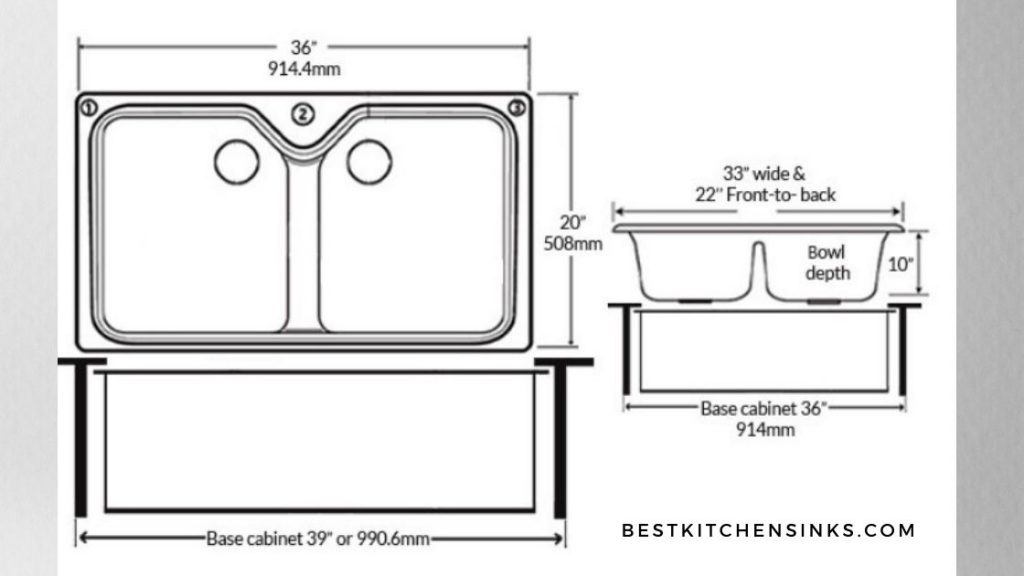
How Should I Measure a New Sink to Fit in My Kitchen
In order to find out the answer and get your new kitchen sink on its way as quickly as possible make sure to take these three important measurements: length and width of opening; depth or height from the bottom of cabinet/countertop surface up into bowl area – this will tell us how much room there is after plumbing fixtures are installed like faucets etc.; width where current fixture sits now. If you need a deeper sink, you may need to make some modifications to the in-wall plumbing.
Generally speaking, the average size of a kitchen cabinet is 36 to 42 inches high, 24 inches deep, and 25 – 26 inches wide. A standard size kitchen sink having dimensions of 22 x 30 inches can easily fit in this space.
However, if your kitchen cabinet is larger, you can opt for a bigger size sink.
To find out the perfect sink size to fit in your kitchen cabinet, measure the length, width, and depth of your cabinet and then subtract 2 – 3 inches from each measurement. You will get the right dimensions of the sink that will fit perfectly in your kitchen cabinet.
If you’re planning to get a deeper sink, take some measurements first. The basin may hang too low and modifications will need to be made behind the wall if so! To know how much deeper sink you can install without making any modifications, simply measure your current plumbing length. This would include both pipes flowing down into one another at their connection point where they meet tee. If there’s 2″ worth of total depth available then go ahead and install a new fixture with the same measurement.

Exploring the Perfect Kitchen Sink Style
Kitchen sinks are mostly available in three styles:
Drop-in sink: These types of sinks fit into an opening in the countertop, while the rim rests on the counter.
Undermount sink: This type of sink is installed below the countertop. The rim of undermount sinks is rested below the counter.
Apron-front sink: This is usually longer and deeper than regular sinks. Apron front/ farmhouse sinks are installed in such a way that their front, or “apron,” is exposed.
How To Choose a Sink For Small Kitchen
For a small kitchen, you want to make sure that your sink is not too big. If it’s too large for the space and has high sides, then you may find yourself bumping into things when trying to clean up after meals or snacks. Sinks with higher backs can also interfere with countertops; if they’re right below your countertop, you may find yourself bumping into them frequently.
- A small sink is about 18-inches in length and 14 inches wide for the average kitchen cabinet size. If your cabinets are smaller than this standard, then it’s probably best to stick with a larger sized sink so that they don’t look too out of place inside your cabinets.
- Be aware of the depth, too. If you have a shallow cabinet space, then your sink’s depth should be about six inches or less to fit inside with room to spare. Anything deeper than this and there is a risk that it will stick out from underneath of the countertop and make getting in and out of the cabinetry difficult.
- If you don’t have a lot of room around your sink, then it’s important to check that the faucet is not too tall. The average height for most kitchen sinks ranges from 16-inches up to 24 inches or so high. This may vary depending on how much clearance space there is underneath the countertop.
- If you are looking for a stainless steel or other metal sink, then be aware that they can weigh more than their porcelain counterparts. This is because the weight of the material has to do with how much it weighs per square inch rather than overall size. Just make sure not to over-fill your small sink with too many dishes and the weight will be fine.

Also Read: Best Under Sink Water Filter of 2021 – Complete Buying Guide & Reviews
Final Verdict
To sum up in a nutshell, you have to make your calculations before buying a new sink for your kitchen. Don’t go for something that’s too customized. There are a lot of sinks available in different shapes and sizes than the standard kitchen sink. While they may look nice in your design, you should be careful to make sure it fits within your space before buying one.






